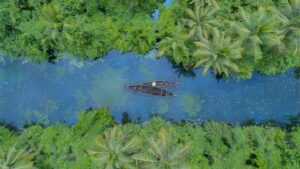User’s Guide on assessing water governance
Sound governance is fundamental for reaching the Millennium development Goals (MDGs) and will be a critical element in the new development framework beyond the expiration of the MDGs in 2015. Establishing water governance assessment mechanisms will thus be an important aspect of any current or future development framework and can help us better recognize if countries are on the right reform track in developing their water resources and services for the greater good of society.
This guide proposes a framework that can be applied as a starting point for any water governance assessment. As a part of water governance, the guide specifies approaches for assessments around water integrity and anti-corruption in the water sector. It also describes the usefulness of other assessment methodologies and presents relevant cases of how assessments can be applied.
Specifically, this guide enables users to:
- Understand how assessments can inform policy-making.
- Select, adapt and develop appropriate assessment frameworks and indicators for governance assessments in the water sector.
- Design multi-stakeholders approaches that further dialogue and consensus-building around water sector reform, and strengthen accountability by offering an official track record of government performance and a platform for public scrutiny by a wide range of actors.
- Implement water governance assessments to drive reform.
Why this guide is needed
During recent years, the international water community has focused on governance as the most important challenge to improve water management and service provision. Most developing countries have developed new water laws and policies, but many face significant challenges in implementing them.
Many of the water policies adopted contain similar features and goals, such as decentralization, an increased role for the private sector, basin-wide management planning, better coordination of decision-making (both horizontal and vertical) and multi-stakeholder participation. But while sound policies have been created on paper, many encounter problems that prevent the formation and proper functioning of governance structures. Furthermore, insufficient attention has been paid to ensure that the sector adheres to principles of good governance, including transparency, accountability, and participation and the types of incentives and disincentives that drive behaviour.
Comprehensive assessments of the governance of water resources can guide the design of effective policy interventions by helping to identify where changes are needed and what actions can make them happen. This guide is a resource for stakeholders to conduct water governance assessments more effectively within their own local or national context. It provides practical advice on what to consider when designing and implementing an assessment. It also offers guidance on a number of concrete topics, such as which governance aspects are important to look at, the choice of indicators, data collection, how to manage multi-stakeholder processes and how to use the findings to influence policy.



